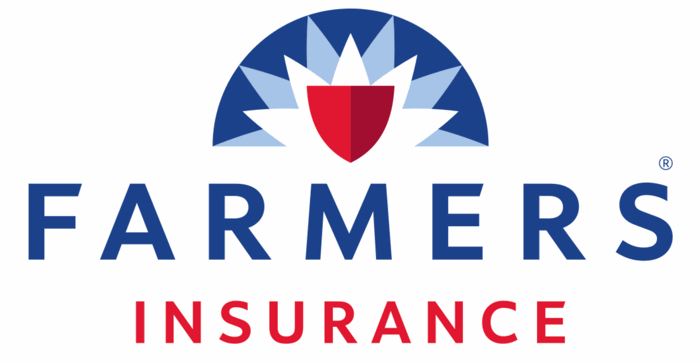
Motorcycle insurance is like it sounds: an insurance coverage policy to protect drivers, passengers, the motorcycle itself, as well as additional damages that may occur.But choosing the right type of coverage is comparable to choosing car insurance.A policy should be selected based on the unique financial and personal situation of the policyholder.
Table of Contents: Motorcycle Insurance vs.Car Insurance What Motorcycle Insurance Covers What Motorcycle Insurance Does NOT Cover Discounts Lay-Up Periods Motorcycle Insurance Requirements While there are additional similarities to car insurance, it’s important to know that motorcycle insurance is its own ballgame.A consumer is likely to find the basic terminology to be comparable, but after taking a closer look at the types of coverage, a consumer will notice some main differences between the two.
For example, a car is more likely to have passengers than a motorcycle, which means passengers tend to be covered in the auto coverage policies, while passengers for a motorcycle would likely fall into their own separate type of coverage.Another big difference between motorcycle insurance and auto insurance is the consideration of the risk of injury.Essentially, it is both easier and more common to get injured while riding a motorcycle as opposed to a car, which means it’s likely that the injury portion of a motorcycle policy will be more expensive than that of a car.
In fact, per mile driven, motorcyclists’ fatality rates are 28 times higher than passenger vehicles And even though the details are different, the policies for a motorcycle and a car can be similar.For instance, both types of coverage protect the item from being lost or stolen.And both will cover things like medical costs affiliated with an accident, whether they are injuries sustained by the policyholder, a passenger, or others.
Here is a common list of motorcycle coverage that is included in most policies: Liability Insurance: This basic coverage will cover injuries sustained by a person in the event of an accident, or to that person’s property.Personal Injury Protection: This is very important as it covers medical bills for injuries that a policyholder, a passenger, or pedestrians may have sustained due to an accident.This coverage generally protects the policyholder regardless of who is at fault for the accident, but rules can vary by state.
Comprehensive Insurance: If a motorcycle is damaged or stolen by something other than a collision with another vehicle or an accident, this coverage will kick in.Additionally, it’s common for animal collisions to be covered under this policy as well, though a deductible will likely apply.Collision Insurance: This will help pay for any damage sustained to a motorcycle, minus the amount of the deductible.
Uninsured and Underinsured Motorist Coverage: If another party is at fault for an accident and a policyholder has sustained damage (property or motorcycle) or injuries and is in need of medical attention, and that party doesn’t have enough insurance to cover the costs, this coverage will split the difference.Guest Passenger Liability Coverage: This protection works in the same way that personal injury protection does, but pertains to a passenger riding on the motorcycle with the policyholder.Motorcycle Insurance Policy Add-Ons And like other types of insurance, motorcycle coverage typically offers a policyholder the option of add-ons.
While some of these policies may be lumped into the larger policy as a whole, some companies might have them separate and require a deductible.Regardless, add-ons allow a policyholder to better customize their coverage to more accurately tailor the policy to their needs.Here is a list of some common add-ons offered by motorcycle insurance companies: Trip Interruption Coverage: This coverage can come in handy if a policyholder’s motorcycle is in a collision far from home (usually 100 miles or more, but specific to the terms of the policy itself) and damaged.
This coverage will pay for lodging, transportation, and food.Transport Trailer Coverage: It’s common for an insurance company to provide coverage for trailers.While the policy amount will be outlined in the policy itself, the coverage usually includes trailers valued at up to $7,500.
Coverage for Custom Parts, Equipment, and Accessories: Motorcycle riders know that customizing their bike is part of the fun.And while some companies will include some custom parts and accessories as part of a comprehensive and collision insurance policy (usually up to $3,000), it’s common for riders to want to incorporate coverage for the additional items, such as chrome parts, saddlebags, or other personal touches to make the bike uniquely theirs.Roadside Assistance: In the event of a breakdown, this coverage will pay for towing and labor costs.
While the range of options for a policyholder seems pretty substantial, there are a few things that a motorcycle insurance policy simply doesn’t cover.For example, the commercial use of a motorcycle is not a common inclusion in these policies.If an individual relies on a personal motorcycle for work, it might be worth looking into possible add-ons to the policy, or else considering the switch to a commercial vehicle insurance policy.
If a policyholder drives their bike on a track or for competition, they need to make sure this is included in their policy, as it is not standard.There are types of temporary coverage that insurance companies provide so that the motorcycle and rider are protected during the times it is on the track, but the policyholder must be sure to have that discussion with their agent.Similar to an automobile insurance policy, motorcycle riders can be rewarded with discounts.
These are usually for things like maintaining a clean driving record, completing a motorcycle riders training course, insuring more than one motorcycle on a policy, buying another type of policy (homeowner’s insurance, for example) from the same insurance company, or other factors depending on the company and the situation.Depending on the location, it’s common for motorcycles to be stored for the winter, in the garage at home, a storage unit, or taken to a shop for some seasonal maintenance during the offseason.Insurance companies are aware of this, and to further competition, many offer lay-up insurance during the winter.
Lay-up insurance is a way for a policyholder to save on the annual cost, and for certain coverages to be dropped during this limited period.However, this type of coverage will continue to protect against such things as theft or damage.But it’s important to note that if a rider takes the bike out on the road during this lay-up period, an accident (or other road-related coverages) will not be covered by the policy at that time.
If a consumer owns a motorcycle, then they are certainly aware of the legality of needing coverage in order to operate their bike.In fact, almost every state (with the exception of Florida) requires that riders have motorcycle insurance.While these requirements differ from state to state, they each contain a minimum liability that each motorcycle operator must have.
Motorcycle insurance is quite popular and most of the major auto insurance companies will provide quotes for free.Additionally, if a policyholder currently has a car insurance policy with a particular provider, they might consider discussing the possibility of adding motorcycle insurance as an endorsement or addition to the policy.While this might not be true of all providers, it is common for providers to make these sorts of additions.
A major consideration is what the intention is behind traveling.If an individual is simply going on weekend cruises in the area where they live, they might be better off discussing their situation with a local agent as opposed to getting an online quote.Local agents tend to know the ins and outs better, and make such a decision easier to navigate for the consumer.
Motorcycle insurance is a must-have for motorcycle riders.What’s important to know is that all insurance policies are not the same, and depending on a rider’s financial and personal situation, as well as the intended use of the bike, some coverage options make more sense than others.Before deciding on a policy, an individual should discuss their situation with a local agent so they find the right coverage for their own needs, and come to understand the specifics of their policy better.
*While we make every effort to keep our site updated, please be aware that "timely" information on this page, such as quote estimates, or pertinent details about companies, may only be accurate as of its last edit day.Huntley Wealth & Insurance Services and its representatives do not give legal or tax advice.Please consult your own legal or tax adviser.
Publisher: Insurance Blog by Chris








